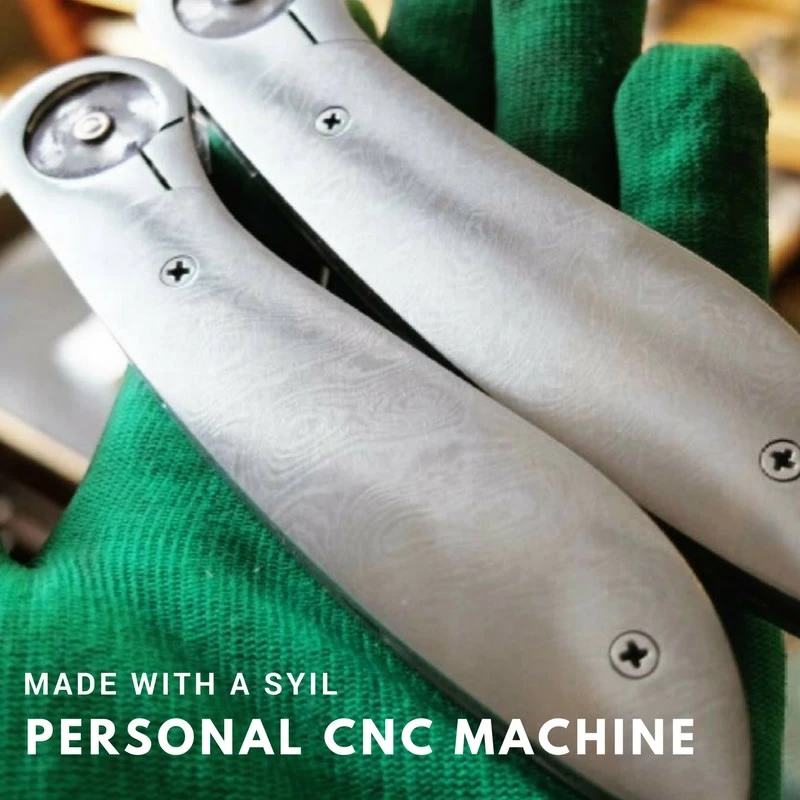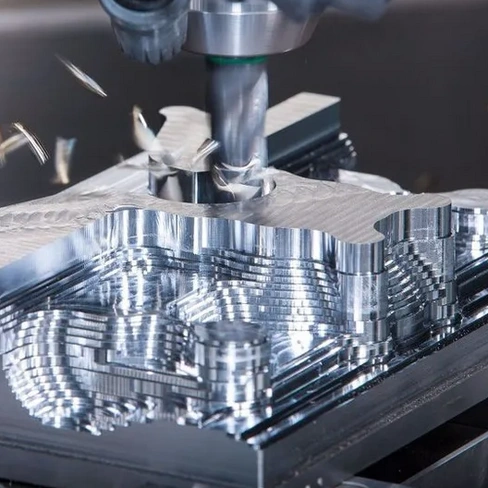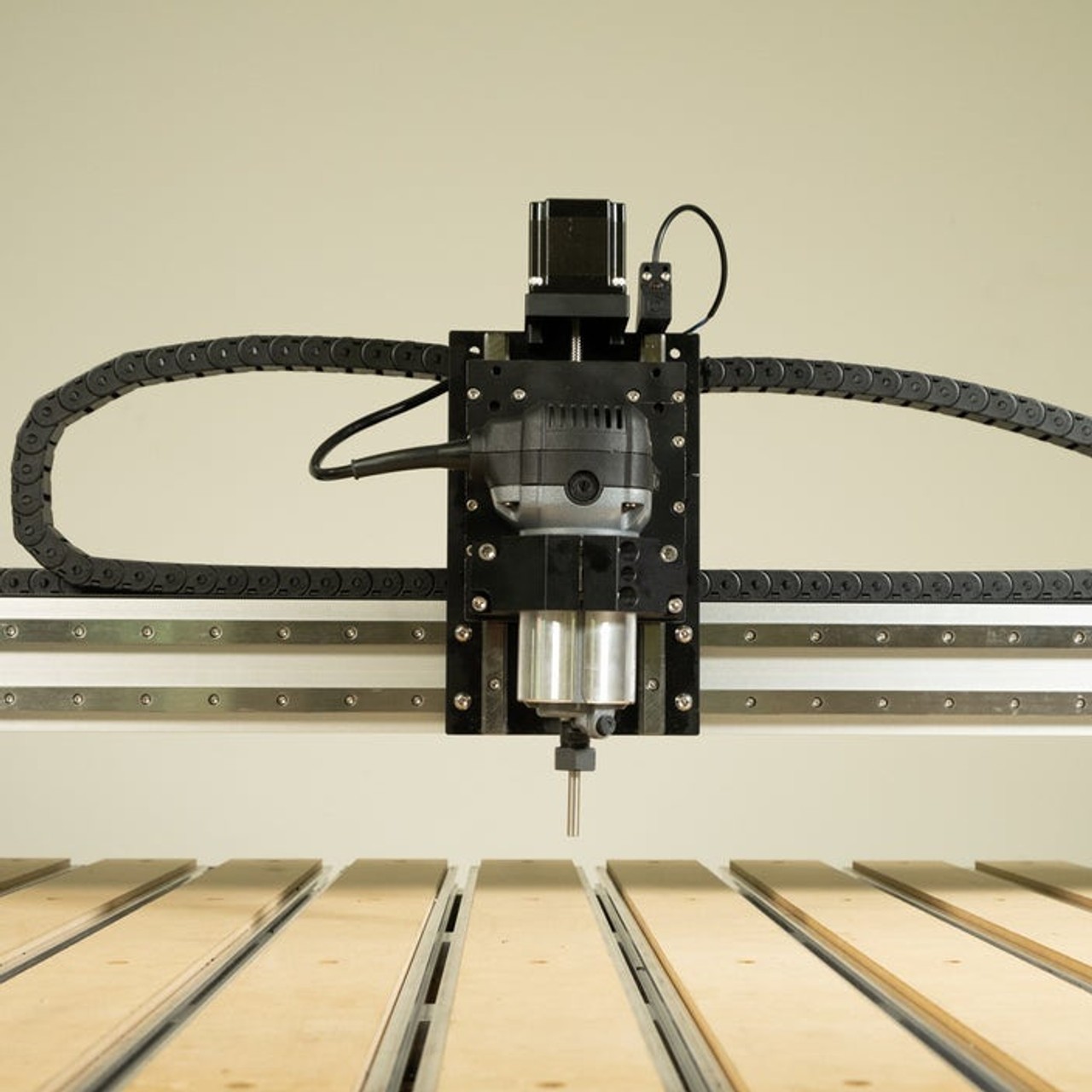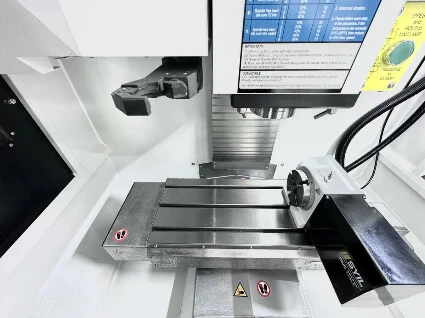Introduction

Are you intrigued by the idea of creating your own custom knives? CNC knife making is a fascinating craft that combines traditional craftsmanship with cutting-edge technology. With the right tools and materials, you can bring your unique knife designs to life with precision and accuracy. Whether you're a seasoned knifemaker or just starting out, CNC technology has revolutionized the art of knife making, offering endless possibilities for creativity and innovation.
Understanding CNC Knife Making
CNC knife making involves using computer numerical control (CNC) machines to automate the cutting and shaping of knife components. This advanced technology allows for precise and consistent results, ensuring that each knife is crafted with meticulous attention to detail. From blade profiles to handle contours, CNC machines offer unparalleled accuracy in creating custom knives tailored to your exact specifications.
Materials Needed for CNC Knife Making
To embark on your CNC knife making journey, you'll need a variety of high-quality materials such as steel, wood, and synthetic composites for blades, handles, and scales. Each material brings its own unique characteristics to the finished product, allowing you to create knives that are not only functional but also visually stunning. With the right combination of materials and a reliable CNC machine, you can unleash your creativity and bring your design ideas to life.
Importance of CNC Technology in Knife Making
The integration of CNC technology in knife making has revolutionized the industry by streamlining production processes and enhancing precision. By utilizing CAD software and state-of-the-art machinery like SYIL's CNC machine for knives, knifemakers can achieve unparalleled levels of accuracy in their designs. The ability to replicate intricate patterns and complex shapes with ease has elevated the art of knifemaking to new heights, setting a standard for excellence in craftsmanship.
Choosing the Right Knife Design

When it comes to CNC knife making, choosing the right design is crucial. Researching popular knife designs can provide inspiration and insight into what works well in terms of functionality and aesthetics. Whether it's a classic Bowie knife or a modern tanto blade, understanding the appeal of different designs can help in creating a unique and compelling product.
Researching Popular Knife Designs
Researching popular knife designs involves studying the history and evolution of various styles, from traditional pocket knives to tactical fixed blades. Knifemakers can draw inspiration from iconic designs like the Grissom Knife and Tool or explore the latest trends in custom knife making. By understanding what makes certain designs timeless or cutting-edge, knifemakers can make informed decisions about their own creations.
Customizing a Unique Knife Design
Customizing a unique knife design allows knifemakers to put their own spin on traditional or contemporary styles. Whether it's adding personalized engravings, experimenting with unconventional blade shapes, or incorporating innovative handle materials, customization is where creativity truly shines. This process not only sets CNC knives apart from mass-produced options but also reflects the individuality and craftsmanship of the knifemaker.
Utilizing CAD Software for Designing
Utilizing CAD software for designing offers precision and flexibility in bringing custom knife designs to life. With advanced 3D modeling capabilities, knifemakers can visualize their concepts from every angle, make precise adjustments, and simulate how different materials will interact with each other. This digital approach streamlines the design process and ensures that every detail is meticulously planned before moving on to production.
Selecting the Right Materials

When it comes to CNC knife making, choosing the right materials is crucial for achieving the desired quality and functionality. Exploring different types of steel for knives is essential, as each type offers unique properties in terms of hardness, edge retention, and corrosion resistance. Knifemakers often turn to high-carbon stainless steel or tool steel for their CNC knives, depending on the specific requirements of the blade. Additionally, understanding the role of handles and scales in knife making is important, as these components not only contribute to the aesthetics of the knife but also impact its ergonomics and overall performance. Finally, considering the importance of blade thickness is vital, as it directly affects the balance, strength, and cutting ability of the knife.
Exploring Different Types of Steel for Knives
When exploring different types of steel for CNC knives, knifemakers often consider factors such as carbon content, alloying elements, and heat treatment processes to determine which type best suits their needs. High-carbon stainless steel like 440C or VG-10 is favored for its exceptional edge retention and corrosion resistance, making it ideal for everyday carry (EDC) knives. On the other hand, tool steels like D2 or A2 are preferred for their superior toughness and wear resistance, making them suitable for heavy-duty applications such as hunting or survival knives.
The Role of Handles and Scales in Knife Making
The handles and scales play a crucial role in CNC knife making by not only providing a comfortable grip but also enhancing the visual appeal of the finished product. Knifemakers have a wide range of materials to choose from when crafting handles, including natural materials like wood or bone, synthetic materials like G-10 or Micarta, and even metal alloys like titanium or aluminum. Each material offers unique characteristics in terms of durability, texture, and weight distribution that can greatly influence how a knife feels in hand.
Understanding the Importance of Blade Thickness
Blade thickness is a critical consideration in CNC knife making as it directly impacts several key aspects of performance such as cutting ability, durability under stress, and overall balance. While thinner blades are generally more adept at slicing tasks due to reduced friction during cutting motions, thicker blades offer greater structural integrity when subjected to heavy-duty use such as chopping or prying. Finding an optimal balance between blade thickness and intended usage is essential for producing a well-rounded CNC knife that excels across various cutting tasks.
Using SYIL CNC Machine for Precision Cutting

When it comes to CNC knife making, the SYIL CNC machine is a game-changer. Its advanced features, such as high-speed spindle and precision servo motors, ensure accurate and efficient cutting for creating custom knives. The machine's compatibility with various materials makes it an ideal choice for knifemakers looking to craft unique designs with ease.
Exploring the Features of SYIL CNC Machine
The SYIL CNC machine offers a user-friendly interface that allows knifemakers to program intricate designs and execute precise cuts effortlessly. Its robust construction and stable framework provide the necessary support for machining different types of steel, ensuring consistent quality in every knife produced. The machine's versatility makes it a valuable asset for both seasoned and aspiring knifemakers.
Setting Up the Machine for Knife Making
Setting up the SYIL CNC machine for knife making involves securing the workpiece, loading the appropriate cutting tools, and programming the design specifications into the system. Knifemakers have the flexibility to customize cutting parameters based on their unique design requirements, allowing them to achieve unparalleled precision in their creations. With proper calibration and tool alignment, the machine is ready to bring any knife design to life.
Ensuring Safety Measures While Operating the Machine
Safety is paramount when operating any machinery, especially when crafting sharp tools like knives. Knifemakers must adhere to safety protocols while using the SYIL CNC machine, including wearing protective gear, maintaining a clean workspace, and following standard operating procedures. By prioritizing safety measures, knifemakers can confidently utilize the machine to produce high-quality knives without compromising their well-being.
Furthermore, knifemakers should undergo proper training on the operation of the SYIL CNC machine to ensure they are familiar with its functions and capabilities. This will help them avoid accidents and errors while using the machine, ultimately contributing to a safer working environment. Additionally, regular maintenance and inspection of the machine should be conducted to identify any potential hazards or issues that may compromise safety.
CNC Knife Machining Process

When it comes to CNC knife machining, the process involves precision cutting and shaping techniques to create a high-quality knife. The first step is to program the CNC machine with the design specifications, ensuring accuracy and consistency in the cutting process. This is where the machine's capabilities shine, as it can execute complex patterns and intricate details with ease.
Step-by-Step Guide to CNC Knife Machining
To begin the CNC knife machining process, you need to secure the raw material on the machine bed and initiate the cutting program. The machine will then start carving out the blade and handle according to your design, following a precise path for each cut. Once the rough shape is achieved, finer details can be added through additional machining passes for a flawless finish.
Precision Cutting and Shaping Techniques
The beauty of using a CNC machine for knife making lies in its ability to achieve unparalleled precision in cutting and shaping. With advanced technology and specialized tools, intricate designs and complex geometries can be executed with utmost accuracy. This ensures that every aspect of the knife, from blade bevels to handle contours, is crafted to perfection.
Furthermore, the CNC machine allows for consistent and uniform results, ensuring that each knife produced is of the highest quality. This level of precision also minimizes material waste, maximizing efficiency and reducing production costs. The ability to replicate designs with exacting accuracy makes it possible to create custom knives with intricate patterns and details, meeting the unique preferences of individual customers.
Finishing and Polishing the Knife
After the rough machining is completed, it's time to focus on finishing touches that elevate the knife's aesthetics and functionality. This involves processes such as grinding, sanding, and polishing to refine the blade's edge and surface finish. By carefully honing these details, you can achieve a professional-grade result that showcases your expertise as a knifemaker.
Remember that mastering CNC knife machining requires patience and practice – but with dedication, you can create exceptional knives that stand out in quality and craftsmanship within Grissom Knife & Tool or any other brand in this industry!
Testing and Quality Assurance

After the CNC knife has been machined, it's crucial to evaluate its sharpness and durability. Using specialized equipment, knifemakers can test the blade's edge retention and overall strength to ensure it meets the highest quality standards. This step is essential in determining the functionality and reliability of the CNC knife.
Evaluating the Sharpness and Durability of the CNC Knife
Knifemakers carefully examine the edge of the CNC knife to assess its sharpness, checking for any imperfections or inconsistencies in the blade. They also conduct rigorous tests to measure its durability, ensuring that it can withstand various cutting tasks without dulling or chipping. This meticulous evaluation guarantees that every CNC knife produced is of exceptional quality and performance.
Ensuring the Knife Meets Quality Standards
Once the sharpness and durability tests are completed, knifemakers thoroughly inspect every aspect of the CNC knife to ensure it meets stringent quality standards. From blade symmetry to handle ergonomics, every detail is scrutinized to guarantee that each knife is crafted with precision and excellence. This careful examination is vital in upholding a reputation for producing top-of-the-line CNC knives.
Making Necessary Adjustments for Improvement
In some cases, adjustments may be needed to enhance certain aspects of the CNC knife, such as refining its edge geometry or optimizing its heat treatment process for superior performance. Knifemakers use their expertise to identify areas for improvement and implement necessary changes to elevate the quality of their knives. This commitment to continuous enhancement ensures that every CNC knife surpasses expectations.
As we conclude our exploration into testing and quality assurance in CNC knife making, it's evident that this meticulous process plays a pivotal role in delivering exceptional knives that meet high industry standards. By evaluating sharpness, ensuring quality standards are met, and making necessary adjustments for improvement, knifemakers uphold a tradition of excellence in crafting precision-engineered knives using advanced technology like SYIL's CNC machine.
Conclusion

As you can see, CNC knife making is a precise and innovative process that requires the right tools and expertise. With the SYIL CNC machine, achieving precision and perfection in knife making becomes a reality. Embracing the future of knife making with CNC technology opens up endless possibilities for creating unique and high-quality knives. Learning from experienced knifemakers in the industry is invaluable for honing your skills and staying ahead of the game.
Achieving Precision and Perfection with SYIL CNC Machine
The SYIL CNC machine offers unparalleled precision and efficiency in crafting knives, ensuring that every cut is accurate and consistent. This advanced technology allows for intricate designs to be brought to life with ease, making it a game-changer for knifemakers looking to elevate their craft.
Embracing the Future of Knife Making with CNC Technology
With the rise of CNC technology, traditional knife making processes are being revolutionized, offering greater precision, speed, and customization options. Embracing this future means staying ahead of the curve and being able to create knives that are truly unique and exceptional.
Learning from Experienced Knifemakers in the Industry
Experienced knifemakers have a wealth of knowledge and expertise that can be invaluable for those looking to improve their craft. By learning from these seasoned professionals, you can gain insights into advanced techniques, design principles, and best practices that will take your knife making skills to new heights.

